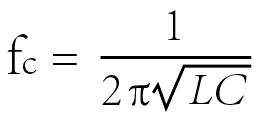Designing LC low-pass filters for ultra-low frequency (ULF) applications (typically below 1 Hz) presents several unique challenges due to the impracticality of passive components at such frequencies. Below are the key challenges:
1. Impractically Large Inductor (L) and Capacitor (C) Values
The cutoff frequency (\(f_c\)) of an LC low-pass filter is given by:

For ultra-low frequencies (e.g., 0.1 Hz), L and C must be extremely large (e.g., Henries and Farads), making passive components bulky, expensive, and lossy.
2. Component Non-Idealities
Inductor Issues:
Large inductors suffer from high DC resistance (DCR), leading to significant I²R losses.
Core saturation and nonlinearity in large inductors distort signal behavior.
Parasitic capacitance becomes problematic, affecting high-frequency rejection.
Capacitor Issues:
Electrolytic capacitors (needed for large capacitance) have high ESR (Equivalent Series Resistance), reducing filter efficiency.
Leakage current and dielectric absorption introduce errors in signal integrity.
3. Sensitivity to Component Tolerances
Small variations in L or C (due to manufacturing tolerances, temperature drift, or aging) cause significant shifts in the cutoff frequency.
Achieving tight tolerance in ultra-large components is difficult and expensive.
4. Poor Transient Response & High Time Constants
The filter's time constant (τ = L/R or RC) becomes extremely large, leading to:
Slow settling times (undesirable for step responses).
Excessive phase delays, making the filter unsuitable for real-time control systems.
5. Noise and Interference Susceptibility
At ultra-low frequencies, 1/f noise (flicker noise) dominates, degrading signal quality.
Large inductors and capacitors act as antennas, picking up electromagnetic interference (EMI).
6. Alternative Solutions Often Required
Due to impractical passive components, designers often resort to:
Active filters (using op-amps, OTAs, or gyrators to simulate large L/C values).
Switched-capacitor filters (for programmable cutoff frequencies).
Digital filtering (DSP-based approaches for precise control).
Conclusion:
While LC filters are simple and effective for higher frequencies, their use in ultra-low frequency applications is limited by component size, losses, tolerances, and noise. Active filtering techniques or digital signal processing are often better alternatives for such cases.
Yun Micro, as the professional manufacturer of rf passive components, can offer the cavity filters up 40GHz,which include band pass filter, low pass filter, high pass filter, band stop filter.
Welcome to contact us: liyong@blmicrowave.com